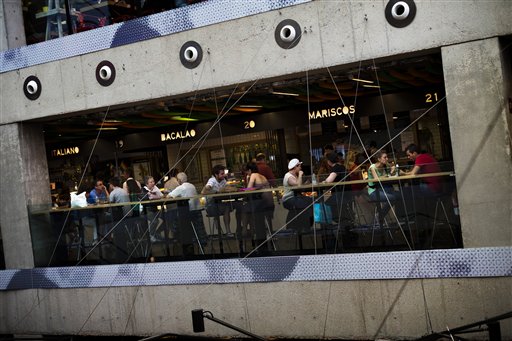(AP) Eurozone’s longest-ever recession comes to an end
BRUSSELS
The recession in the eurozone came to an end in the second quarter of the year, official figures confirmed Wednesday.
Eurostat, the European Union’s statistics office, said the 17 European Union countries that use the euro saw their collective economic output grow by 0.3 percent in the April to June period from the previous quarter.
That’s the first quarterly growth rate since the eurozone slipped into recession in the final quarter of 2011. The ensuing recession of six quarters was the longest to afflict the eurozone since the euro currency was launched in 1999.
The quarterly improvement made up for the previous quarter’s equivalent decline and was moderately better than the 0.2 percent anticipated in the markets. Despite the growth recorded during the quarter, the eurozone economy remains 0.7 percent smaller compared with the second quarter last year. However, that’s still an improvement on the 1.1 percent annual contraction seen in the first quarter.
The figures provide will be greeted with a sigh of relief by Europe’s policymakers, who have spent nearly four years grappling with a debt crisis that has threatened the very future of the euro.
The improvement was largely due to solid economic growth of 0.7 percent in Germany and a surprisingly strong 0.5 percent bounce-back in France.
And aside from Europe’s top two economies, there were signs of stabilization elsewhere, notably in Portugal, which grew by a surprising 1.1 percent. Spain and Italy saw the pace of their economic contractions slow.
There was even evidence that the recession in Greece, the country at the heart of Europe’s debt crisis, is easing, too. Eurostat doesn’t publish quarterly figures for Greece. It only has annual comparisons and they showed that the year-on-year contraction eased to 4.6 percent in the second quarter from 5.6 percent in the first.

COMMENTS
Please let us know if you're having issues with commenting.